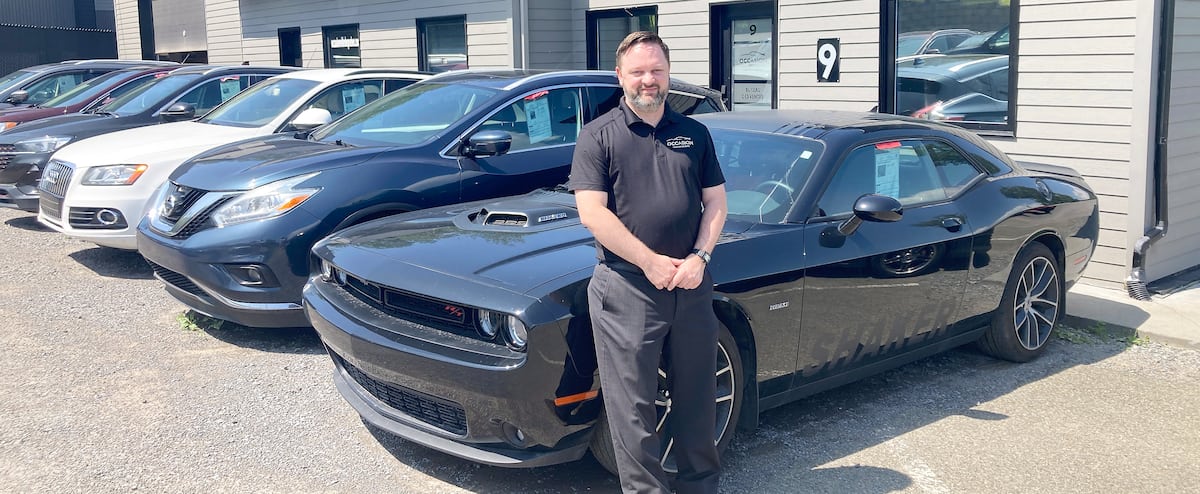A single mother, who wishes to remain anonymous, has been looking for a used car for a year. She begins to think that she can no longer afford one.
• Read also: Inflation at the grocery store: margarine soon more expensive than butter
• Read also: How to pay up to 6 times less for your cleaning and hygiene products at Dollarama
“Small economical cars sell for practically more than the price at which they were sold new,” says the one who has toured dealerships in Quebec and beyond.
She stretches out her 2009 car, which has 250,000 km on the clock, and wonders whether to live without a car now, even if she has a good job. The idea of paying a fortune for a used car, which will be expensive to maintain, keeps her from buying.
In the yard of a used vehicle dealer in Sainte-Brigitte-de-Laval, there was a small 2018 Toyota Yaris this week with 52,600 km on the odometer at $19,679, without taxes and other fees. New, five years ago, the same car sold for between $17,000 and $22,000. But at the time, there was sometimes 0% interest, whereas today you have to pay a rate of 9.9% to buy it on credit.
“I paid the same price for this Yaris as I had sold an identical one two years ago. Someone who bought a vehicle three years ago will sell at the price he paid for it,” notes Carl Tremblay, owner of Occasion Ville de Québec.
A small 2018 Yaris, with 52,600 km on the clock, sells for $19,679.
Photo Valerie Lesage
“The increase in the prices of new vehicles has ended up creating scarcity in used vehicles, where prices are also rising. It becomes very difficult, especially for first-time buyers,” said the businessman.
“And the big problem is that the young people’s first vehicle, instead of costing $3,000, it costs $8,000. The price increase has looked like this for a year and a half. This is not good news for the most vulnerable”, he observes with spite.
Disappearance of affordable models
In the new market, the affordable car category is tending to disappear in North America. At the end of 2017, there were 36 models on the US market under US$25,000, according to Cox Automative. Last year there were only 10.
The share of affordable car sales has fallen 78% in five years, while sales of luxury models (US$60,000 and over) have climbed 163%.
This is why the less fortunate snap up used cars. Those under $10,000 are rare, according to Carl Tremblay, and they are at least 10 years old, so they are not eligible for financing. Despite this, we pull them out.
“I have a 2013 Kia Rio at $11,000 right now, with 140,000 km on the clock, and I have four customers who want it. With taxes, it’s $12,623 to pay cash, it’s really a lot of money,” says the entrepreneur, who is not happy with this situation.
He says he is not making more profits because prices have skyrocketed: he too has to pay more for the vehicles he resells. And in the end, everyone knows well that their market value today exceeds their real value.
Average price of new vehicles in Canada
- 2019: $35,000
- 2023: $46,000
Average price of used cars in Canada
(Source: JD Power)
Average monthly payment for new vehicles 2023
- $749 for an average term of seven years
(Source: DealerTrack Canada, Equifax)
Average monthly payment for used cars in 2023
- $625 per month for an average term of six years
“There are limits!”
Electric cars, which are $10,000 to $15,000 more expensive, are helping to push up prices in the automotive sector.
Geneviève Savard wanted to buy a 4X4 electric SUV, since she must regularly cross the Laurentian Park, from Stoneham to Saguenay, to go teach. She thought it could be economical, since she drives a lot and gasoline is expensive.
Reserved in December 2021, the Volkswagen ID4 she wanted was to cost her $760 per month for seven years, the average price paid by Canadian consumers in 2023.
“But when it was finally ready and I could have placed the order, to keep the same monthly payments, you had to pay for eight years. I decided to let it go, ”she says, a little shocked to see that the manufacturer had made the equipment favoring a greater autonomy of the vehicle optional, instead of keeping it included in the basic model.
Another element that pushed the cost of the planned purchase upwards: interest rates, approaching 9%.
“That doesn’t make sense! We may love cars, there are limits!”, she says.
Mme Savard decided to keep his four-year-old, 110,000 km car, instead of buying another. Even to have the new equivalent of his, and taking into account the high amount of the purchase of his current vehicle by the dealer, he would have had to pay $150 more in monthly payments.
“I’m going to wear it down, my car. I’ve never done that, but you have to use your money intelligently,” she believes.


